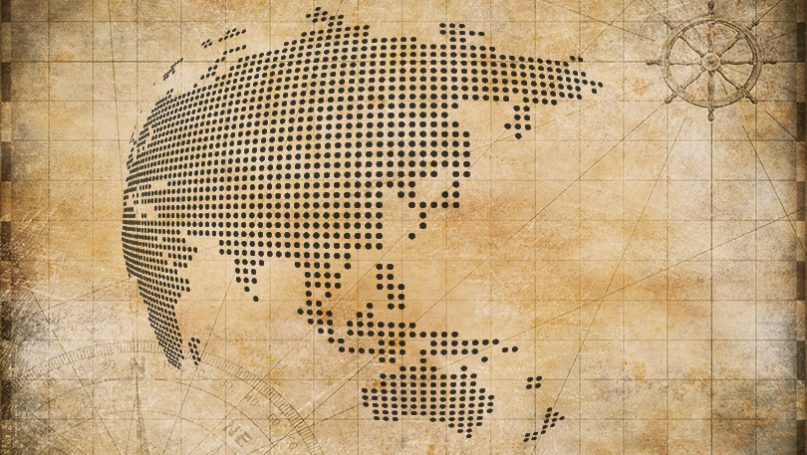Balasubramanian C

With a paradigm shift from ‘Asia-Pacific’ to ‘Indo-Pacific’, the term has seen proliferation in academic, geopolitical and geo-economic discourse and an array of different policies and strategic approaches from various countries. The notion of ‘Indo-Pacific’ has assumed a new rallying point for major stake holders – the US, China, Japan, India, Australia and others – to articulate their strategic postures. On a visit to India in 2007, the then Japanese Prime Minister Shinzo Abe spoke of a ‘Broader Asia’ in the ‘Confluence of Two Seas’. Indo-Pacific despite differing perceptions is now a geopolitical & geo-economic reality. While there is talk of a broader ‘Indo-Pacific’, encompassing the Indian Ocean as well as the Pacific Ocean, this is not yet reflected in the geopolitics of trade. The question that arises in our minds is how far are we from an Indo-Pacific order?
Trade has been at the heart of Asia’s engine of economic growth over the last 50 years. Japan, followed by the famously called four Asian Tigers of South Korea, Taiwan, Hong Kong and Singapore, and then – largest of all – China, pursued its development strategies based on the export of manufactured products to the US, Europe and rest of the world. The nature of trade has changed since the 1990s. Trade within Asia is now greater than trade from Asia to the rest of the world.
The West especially the US saw increasing protectionism under the then US President Donald Trump and ‘De-globalisation’ tendencies coupled with trade war with China. While China under President Xi Jinping is leading a ‘Globalisation with Chinese Characteristics’. The US first proposed a Trans-Pacific Partnership (TPP) but then withdrew from discussions in 2017. Asian countries went ahead with the Comprehensive and Progressive Agreement for Trans-Pacific Partnership (CPTPP) in 2019. The CPTPP looks very much of an Asia-Pacific rather than Indo-Pacific agreement, with Australia, Brunei, Canada, Chile, Japan, Malaysia, Mexico, New Zealand, Peru, Singapore and Vietnam as its signatories. The intentions of the newly incumbent US President Joe Biden’s administration are yet to be clear.
China is notable by its absence. From the start, CPTPP was seen as a mechanism to strengthen trade, excluding China, or as an agreement that China might join later if it agreed to further liberalisation. President Xi Jinping has indicated that China will ‘favourably consider’ joining the CPTPP. Many Asian Comprehensive and Progressive Agreement for Trans-Pacific Partnership (CPTPP) signatories have also agreed to sign the Regional Comprehensive Economic Partnership (RCEP) in November 2020 that include all 10 members of ASEAN plus China, Korea, Japan and New Zealand. Geo-economically RCEP requires less liberalisation than CPTTP but brings in China and all ASEAN members. However, with RCEP, it is India that is notable by its absence, as well as the US.
Indian Prime Minister Narendra Modi announced India would not join RCEP, primarily over reservations over cheap Chinese imports would overwhelm Indian firms and markets. Continuing China’s aggression at India’s border and tense relations have reinforced India’s stance. For now, India is putting its effort into bilateral trade agreements. All these developments paint the shape of the new regional agreements remaining far from being truly Indo-Pacific.
Coming to China’s Belt and Road Initiative (BRI), it is characterised more as a strategic infrastructure rather than trade initiative. Well over 100 countries are reported to have signed BRI related MoUs, yet its opaque nature of project funding makes it unclear what this means substantively with more politicised approach to trade. Projects are spread widely across the Indo-Pacific. But again, there are some clear absences – India, Australia and cautious engagement by Japan.
The Asia Pacific Economic Forum (APEC) conceived in 1989 does not include India. India remains outside APEC despite support from countries like the US and Australia. The Asia – Europe Meeting (ASEM) launched in 1996 did not include India, it was only in 2006 that India got admitted. However, alongside this continued evolution in the Asia-Pacific, the ‘Indo’ part of the Indo-Pacific is beginning to grow stronger. Under Prime Minister Narendra Modi, India is keen to engage more with other democracies such Japan and Australia.
As of now the emerging contours of US President Joe Biden’s China policy is predicated on a multilateral, issue-based approach with allies and key partners in the Indo-Pacific region. It has to be borne in mind that the incumbent President Joe Biden has inherited presidency from an intense US-China rivalry from his predecessor and he feels the need to stamp his own signature on the geopolitical, geo-economic curve that is reshaping the global balance of power in the Indo-Pacific. During an address at the US Department of State on 4 February 2021 — his first major foreign policy speech since assuming office — President Biden claimed a departure from Trump’s ‘America First’ policy to take a more globalist approach.
With this grand vision comes a grand challenge that has to be backed up by adequate political will, economic muscle, diplomatic strength and capacity to meaningfully engage with all stakeholders in the region. In the upcoming years of Joe Biden’s presidency, it will become clearer how far these Indo-Pacific initiatives would reshape the norms of international trade.
No comments:
Post a Comment